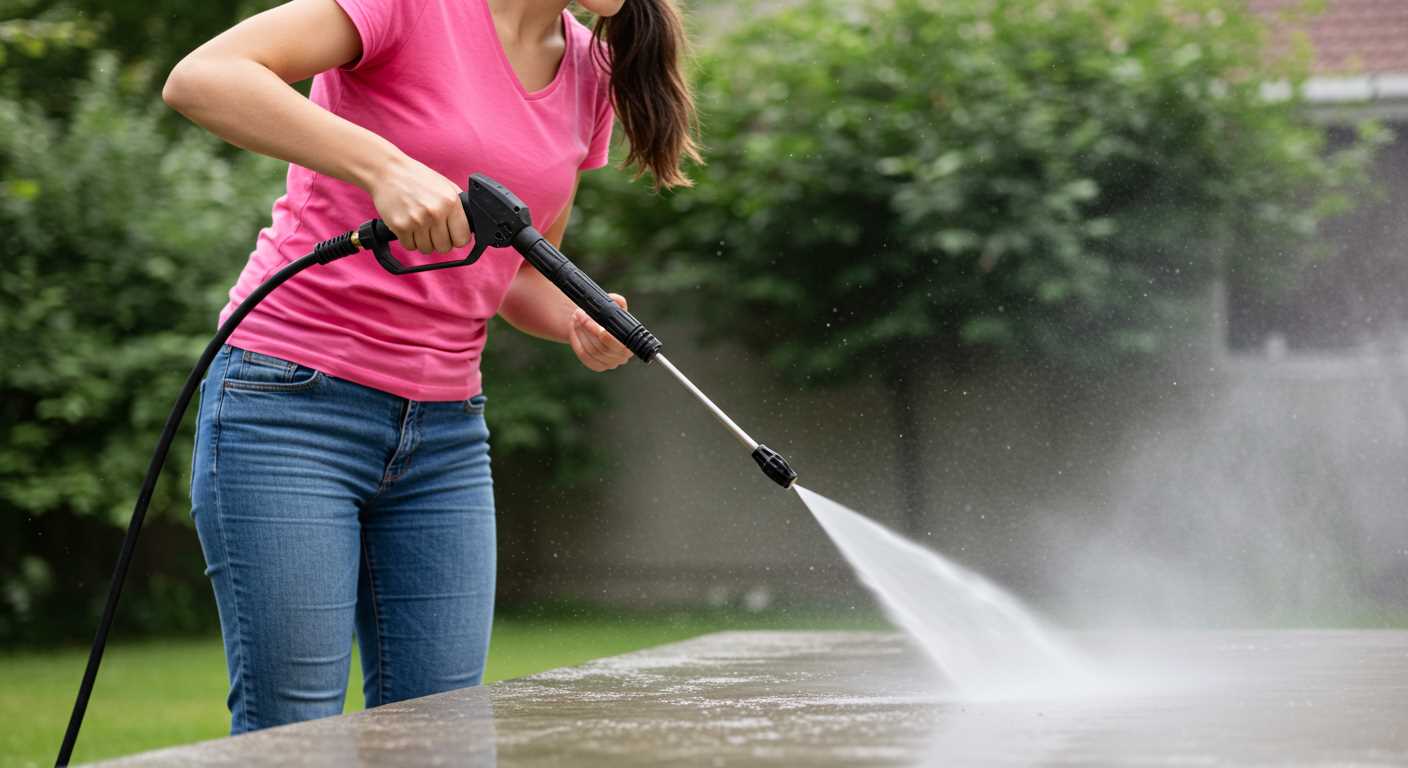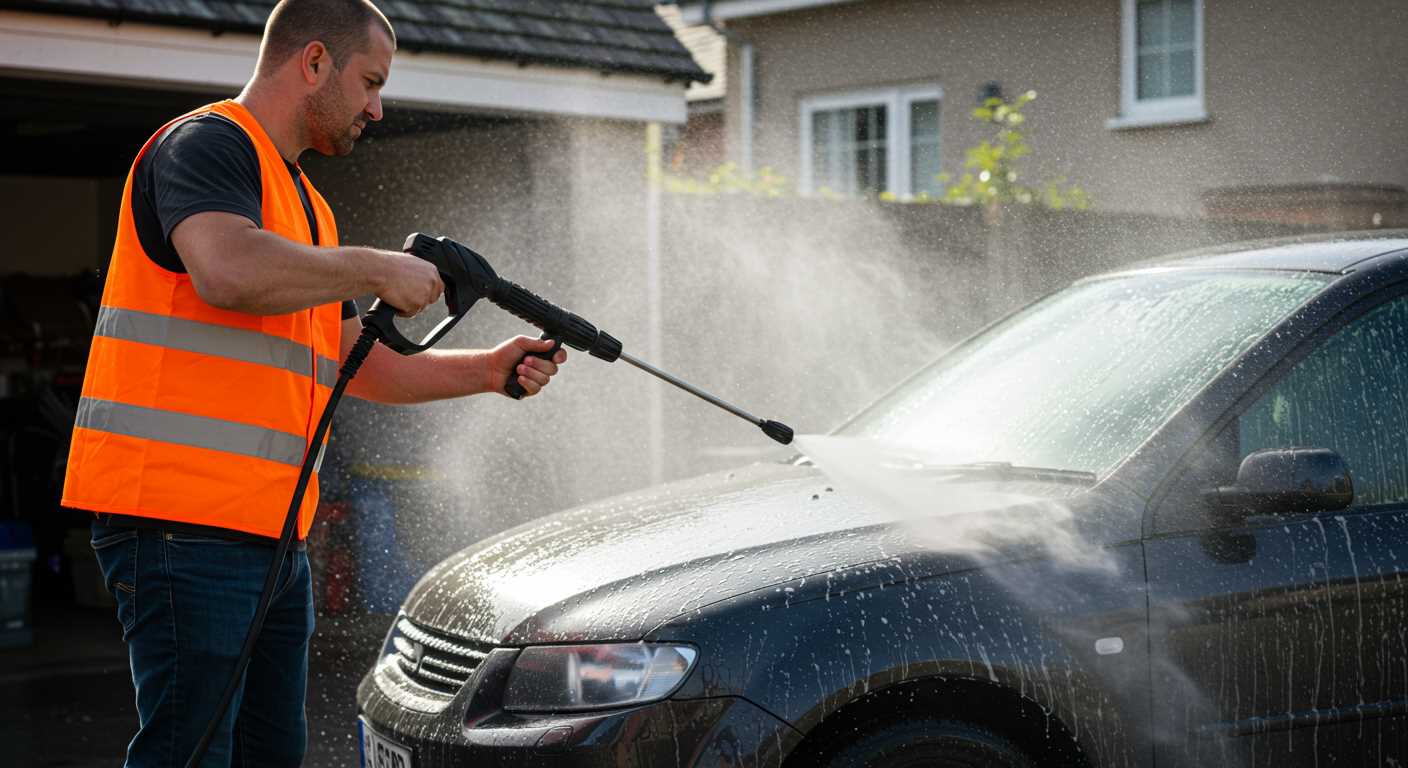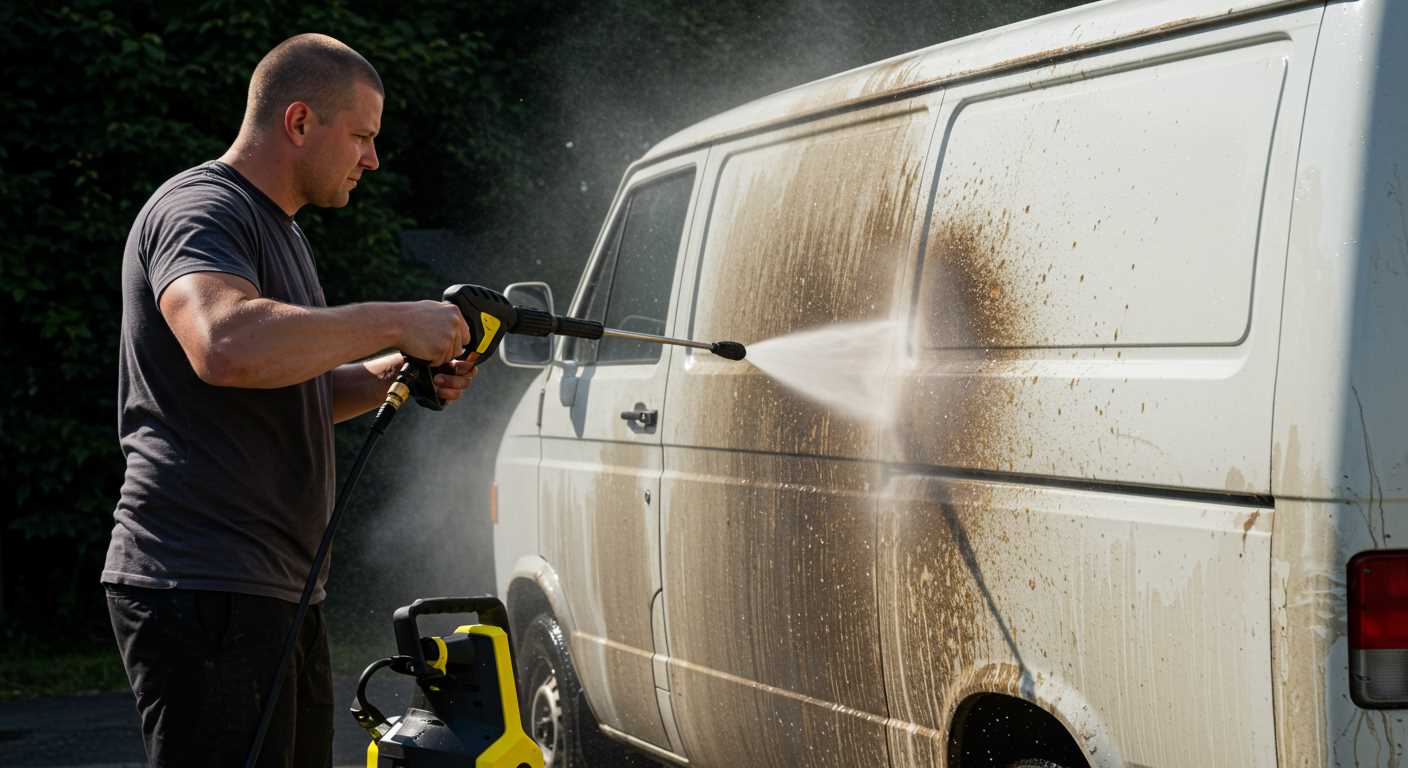


When it comes to maintaining the beauty and integrity of your fence, the right pressure washer nozzle can make all the difference. In this article, I will explore the best nozzles available for pressure washing fences, discussing their specific uses and advantages. Whether you have a wooden, vinyl, or metal fence, understanding which nozzle to use can help you achieve optimal cleaning results without causing damage.
This guide is aimed at homeowners, DIY enthusiasts, and anyone looking to spruce up their outdoor spaces. If you’ve ever struggled with stubborn dirt, mould, or mildew on your fence, you’ll find valuable insights here. I will break down the various nozzle options, their spray patterns, and which ones are most effective for different types of fencing materials.
Throughout the article, I will provide a concise overview of the best pressure washer nozzles for fences, including recommendations based on specific cleaning needs. By the end, you’ll be equipped with the knowledge to choose the perfect nozzle for your pressure washer, ensuring your fence looks as good as new with minimal effort.
Understanding Nozzle Types for Effective Cleaning
Choosing the right nozzle for your pressure washer is crucial when it comes to effectively cleaning your fence. Different nozzle types offer varying spray patterns and pressures that can significantly impact the cleaning efficiency. Understanding these differences will help you select the most suitable nozzle for your specific cleaning needs.
Pressure washer nozzles are typically classified based on their spray angle and the intensity of water flow. The spray angle determines how wide or narrow the water stream will be, while the intensity affects the cleaning power. A deeper understanding of these factors will enable you to clean your fence without causing damage to the surface.
Types of Nozzles
- 0-Degree Nozzle: Produces a narrow, concentrated stream for tough stains but can be damaging if used too close.
- 15-Degree Nozzle: Ideal for removing paint or heavy grime; offers a balance between pressure and coverage.
- 25-Degree Nozzle: Suitable for general cleaning tasks; provides a wider spray pattern for effective dirt removal.
- 40-Degree Nozzle: Best for light cleaning tasks, such as washing windows or delicate surfaces, with minimal pressure.
- Soap Nozzle: Designed for applying detergents; usually has a larger orifice to allow for foam generation.
When cleaning a fence, it’s essential to assess the material and condition of the surface before choosing a nozzle. Using a nozzle with too much pressure on delicate materials could lead to damage, while a nozzle with insufficient pressure may not effectively remove dirt and grime.
In conclusion, selecting the right nozzle type is vital for effective fence cleaning. By understanding the various nozzle options and their applications, you can ensure that your cleaning tasks are carried out efficiently and safely.
Choosing the Right Spray Angle for Fencing
When it comes to cleaning a fence, selecting the appropriate spray angle is crucial to achieving effective results without damaging the surface. Different materials used for fencing, such as wood, vinyl, or metal, require varying levels of pressure and spray angles to ensure thorough cleaning while maintaining the integrity of the material.
Understanding the specific needs of your fence will help you make an informed decision. Using a nozzle with the wrong spray angle can lead to issues such as stripped paint, splintered wood, or even dents in metal surfaces. Therefore, knowing the right angle to use is essential for optimal cleaning results.
Understanding Spray Angles
Pressure washer nozzles typically come in various spray angles, which are measured in degrees. Here’s a brief overview of common spray angles and their typical applications:
- 0 degrees: A concentrated, direct jet perfect for heavy-duty cleaning tasks, but it can easily damage delicate surfaces.
- 15 degrees: Ideal for tough stains on concrete and brick, this angle provides a powerful stream but should be used cautiously on softer materials.
- 25 degrees: A versatile choice that works well on wood and vinyl fences, providing a good balance between cleaning power and surface protection.
- 40 degrees: Suitable for rinsing and light cleaning, this angle is gentle enough for delicate surfaces, making it perfect for vinyl fencing.
- Soap nozzle: Typically a wider angle, this nozzle is designed for applying cleaning solutions effectively.
Choosing the right angle not only impacts the efficiency of the cleaning process but also ensures the longevity of your fencing material. For wooden fences, a 25-degree nozzle is often recommended to avoid splintering, while vinyl and metal fences can usually handle a 40-degree angle for rinsing and light cleaning.
Ultimately, experimenting with a few different angles can help you determine the best fit for your specific fencing material and cleaning needs. Always start with a wider angle and gradually move to a narrower one if necessary, ensuring you protect the integrity of your fence while achieving a clean and polished look.
Material Compatibility: Nozzles for Wooden vs. Vinyl Fences
When it comes to maintaining the appearance of your fence, selecting the right pressure washer nozzle is crucial. Different materials require specific considerations to avoid damage while achieving effective cleaning. Wooden and vinyl fences have distinct characteristics that influence the choice of nozzle, ensuring optimal results without compromising the integrity of the material.
Wooden fences are generally more susceptible to damage from high-pressure water jets. The natural fibres can be easily stripped away or splintered if subjected to excessive force. Therefore, using a nozzle that offers a wider spray pattern is advisable. This disperses the water pressure, allowing for a gentler clean that effectively removes dirt and grime without harming the wood.
Considerations for Vinyl Fences
In contrast, vinyl fences are more resilient to pressure washing. However, the choice of nozzle still plays a significant role in the cleaning process. A narrower spray pattern can be employed on vinyl, as these surfaces can withstand higher pressure without risk of damage. Nonetheless, it is essential to ensure that the nozzle is not too concentrated, as this could lead to unsightly streaks or even surface damage over time.
When selecting nozzles for either type of fence, consider the following:
- Pressure Settings: Ensure the pressure settings align with the material type.
- Spray Pattern: Wider patterns are better for wood; narrower for vinyl.
- Distance: Maintain appropriate distance from the surface to avoid damage.
Ultimately, understanding the compatibility of nozzle types with fence materials ensures a successful cleaning experience, preserving the longevity and appearance of your fences.
Pressure Settings: Matching Nozzle with Washer Power
When using a pressure washer for cleaning fences, selecting the right nozzle is crucial for achieving optimal results without causing damage. The power of your washer and the desired cleaning effect determine the nozzle type and pressure settings you should use. Understanding the relationship between pressure settings and nozzle selection will ensure a successful cleaning experience.
The pressure washer’s power is typically measured in pounds per square inch (PSI), which indicates the force of the water being expelled. Higher PSI levels can effectively remove dirt and grime but may also risk damaging delicate surfaces if not matched with the appropriate nozzle. Conversely, lower PSI settings paired with the right nozzle can clean more delicate materials without the fear of surface damage.
Key Considerations for Matching Nozzle and Pressure
- Type of Fence Material: Different materials, such as wood, vinyl, or metal, require varying pressure levels. For example, wood may need a lower PSI to avoid splintering, while vinyl can withstand higher pressures.
- Nozzle Angles: Nozzles come in various angles, typically ranging from 0 to 40 degrees. A narrower angle provides a concentrated stream for tougher stains, while a wider angle disperses water for gentler cleaning.
- Cleaning Solutions: If using detergents or cleaning solutions, lower pressure settings may be preferable to allow the solution to sit and penetrate stains before rinsing.
In conclusion, matching the nozzle with the pressure settings of your washer is vital for effective and safe cleaning of fences. Always assess the material and the condition of the surface before selecting your nozzle to ensure the best cleaning results without causing damage.
Maintenance Tips for Extending Nozzle Life
Maintaining your pressure washer nozzle is essential for ensuring optimal performance and longevity. A well-cared-for nozzle not only improves cleaning efficiency but also reduces the risk of damage to both the nozzle and the surfaces being cleaned. By following a few simple maintenance tips, you can significantly extend the life of your nozzle.
Regular inspection and cleaning of the nozzle are vital steps in maintenance. After each use, take a moment to check for any debris or clogs that may have accumulated. This will help prevent blockages that can affect water flow and pressure.
Key Maintenance Practices
- Rinse After Use: Always rinse the nozzle with clean water after each use to remove any detergent residue or dirt.
- Inspect for Damage: Regularly check the nozzle for cracks, wear, or other signs of damage. Replace any damaged nozzles promptly.
- Use Proper Storage: Store the nozzle in a cool, dry place away from direct sunlight. This will help prevent deterioration of materials.
- Avoid Cross-Threading: When attaching the nozzle to the pressure washer, ensure threads are aligned properly to avoid damaging them.
- Use Correct Pressure: Always use the recommended pressure settings for your nozzle to prevent undue stress and wear.
By following these maintenance tips, you can enhance the performance and lifespan of your pressure washer nozzle. A little care goes a long way in ensuring your cleaning tasks are efficient and effective.
Top Recommendations for High-Performance Nozzles
Choosing the right pressure washer nozzle for cleaning your fence is crucial for achieving optimal results while ensuring the longevity of your fencing material. With various nozzle types available, it’s essential to consider your specific needs, such as the type of dirt, the material of the fence, and the pressure washer model you are using. Below, we outline some of the top recommendations for high-performance nozzles that can enhance your cleaning experience.
These nozzles are designed to provide excellent performance, versatility, and ease of use, making them ideal choices for tackling tough stains and dirt on your fence.
- 0-Degree Nozzle: Ideal for heavy-duty cleaning tasks, this nozzle delivers a concentrated jet of water that can easily remove stubborn dirt and grime. Recommended for wooden fences with severe staining.
- 15-Degree Nozzle: This nozzle strikes a balance between power and coverage, making it suitable for tougher cleaning tasks without risking damage to the surface. Great for vinyl and composite fences.
- 25-Degree Nozzle: A versatile option for general cleaning, this nozzle is effective for washing away dirt and debris from most fence types, ensuring thorough cleaning without excessive pressure.
- 40-Degree Nozzle: Perfect for delicate surfaces, this nozzle provides a wide spray pattern, making it ideal for cleaning ornamental fences or lightly soiled areas.
- Soap Nozzle: Specifically designed for applying soap or detergents, this nozzle is essential for pre-treating heavily soiled fences, allowing for deeper cleaning.
In conclusion, selecting the right nozzle for your pressure washer can significantly impact the efficiency and effectiveness of your fence cleaning efforts. By considering the recommendations above and understanding your specific cleaning requirements, you can ensure that your fence remains in excellent condition and looks its best.
Top 10 Best Pressure Washer Nozzle For Fence



Best Pressure Washer Nozzle For Fence
Features
| Part Number | ZYW019-S30 |
| Model | ZYW019-S30 |
| Color | Green/Black |
| Size | 30m |
Features
| Part Number | 44137/156 |
| Model | 44137/156 |
| Color | Blue |
| Size | 450ml |
| Language | English |
Video:
FAQ:
Which pressure washer nozzle is best for cleaning a wooden fence?
The best pressure washer nozzle for cleaning a wooden fence is typically a 25-degree nozzle. This nozzle provides a balanced spray pattern that is wide enough to cover large areas while still providing enough pressure to remove dirt and grime without damaging the wood. It’s important to maintain a distance of at least 12 inches from the surface to avoid splintering the wood.
Can I use a turbo nozzle on my fence?
Using a turbo nozzle on your fence is not recommended. Turbo nozzles produce a concentrated, high-pressure spray that can be too harsh for wood surfaces. This can lead to damage, such as gouging or stripping the wood. It’s safer to stick with a standard nozzle for fence cleaning.
How do I determine the right pressure washer nozzle for my fence material?
To determine the right pressure washer nozzle for your fence material, first consider the type of material. For wooden fences, a 25-degree nozzle is generally suitable. For vinyl or metal fences, a 40-degree nozzle may be better, as it offers a gentler spray. Always test the nozzle on a small, inconspicuous area first to ensure it doesn’t cause damage.
What is the difference between a 15-degree and a 25-degree nozzle?
The difference between a 15-degree and a 25-degree nozzle lies in the spray pattern and pressure. A 15-degree nozzle produces a narrow, concentrated stream which is ideal for tough stains and surfaces that require deep cleaning. In contrast, a 25-degree nozzle has a wider spray pattern, making it more suitable for general cleaning tasks, such as washing a fence. The wider angle helps prevent damage to softer materials like wood.
How far should I keep the pressure washer from the fence while using a nozzle?
When using a pressure washer on a fence, it’s advisable to keep the nozzle at least 12 to 18 inches away from the surface. This distance helps to prevent damage while still allowing for effective cleaning. Always adjust the distance based on the nozzle type and the material of the fence. Start from a further distance and gradually move closer if needed, watching for any signs of damage.
What type of pressure washer nozzle is best for cleaning a wooden fence?
When cleaning a wooden fence, the best type of pressure washer nozzle to use is typically a 25-degree or 40-degree nozzle. The 25-degree nozzle provides a good balance between cleaning power and gentleness, making it suitable for removing dirt and grime without damaging the wood. The 40-degree nozzle offers a wider spray pattern and is gentler, which is ideal for more delicate areas or for rinsing after cleaning. It’s important to maintain a safe distance from the wood surface and to test a small, inconspicuous area first to ensure that the pressure does not cause any damage.


.jpg)

.jpg)


